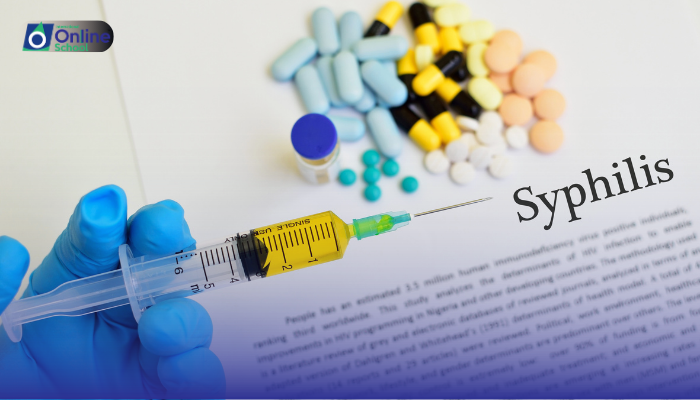
Learning Outcomes:
i. Define sexually transmitted infections (STIs) and identify the bacteria causing gonorrhea and syphilis.
ii. Explain the transmission routes and symptoms of both infections in men and women.
iii. Understand the potential complications of untreated gonorrhea and syphilis, including long-term health consequences and impact on reproductive health.
iv. Appreciate the importance of safe sexual practices, testing, and early treatment in managing STIs.
Introduction:
In the world of intimate relationships, there lurks an invisible threat – sexually transmitted infections (STIs). Two such infections, gonorrhea and syphilis, quietly spread through contact, posing potential health risks if left unaddressed. In this lesson, we'll shed light on these two STIs, exploring their causes, symptoms, and the importance of early intervention for a healthy future.
i. The Culprits at Play: Bacteria Behind the Threat
Gonorrhea: This STI is caused by the bacteria Neisseria gonorrhoeae, which can infect the genitals, throat, and rectum.
Syphilis: This STI is caused by the bacteria Treponema pallidum, which primarily targets the genitals but can also spread to other body parts through the bloodstream.
ii. The Routes of Transmission: How They Spread
Sexual Contact: Gonorrhea and syphilis spread through unprotected sexual intercourse (vaginal, anal, or oral) and can be transmitted from mother to child during pregnancy or childbirth.
Non-sexual Contact: Less common, sharing infected toys or personal hygiene items can potentially transmit gonorrhea, while syphilis rarely spreads through non-sexual contact.
iii. The Tell-Tale Signs: Recognizing the Symptoms
Gonorrhea: Symptoms may appear within 2-10 days after exposure and can include burning urination, discharge from the genitals, and pelvic pain in women, while men may experience similar symptoms along with testicular pain.
Syphilis: Symptoms progress through different stages, with the initial painless sore at the infection site (chancre) being followed by flu-like symptoms and a skin rash in later stages.
iv. The Unfolding Dangers: Consequences of Untreated STIs
Ignoring gonorrhea and syphilis can lead to serious complications:
Pelvic Inflammatory Disease (PID) in women: Untreated gonorrhea can cause PID, leading to infertility and chronic pelvic pain.
Blindness and deafness in newborns: Congenital syphilis can cause blindness and deafness in infants born to infected mothers.
Heart problems and neurological damage: Untreated syphilis can damage the heart, brain, and nervous system in later stages.
v. The Key to Protection: Safe Practices and Early Intervention
Safe Sex: Practicing safe sex by using condoms consistently and correctly is the most effective way to prevent STIs.
Regular Testing: Getting tested for STIs regularly, especially before pregnancy, is crucial for early detection and treatment.
Timely Treatment: Antibiotic medications can effectively treat both gonorrhea and syphilis when diagnosed early.
Gonorrhea and syphilis are serious STIs, but understanding their causes, symptoms, and the importance of early intervention empowers us to take control of our sexual health. By practicing safe sex, getting tested regularly, and seeking prompt treatment if needed, we can protect ourselves and our partners from the potential consequences of these infections. Remember, open communication, responsible sexual practices, and access to healthcare are crucial for navigating the complexities of intimate relationships and maintaining reproductive health and well-being.